While some parrots or larger birds like American flamingoes can live up to 40, 60, and even 80 years old, other birds aren’t as lucky! Some do not even reach one year of age. As you’ll soon learn, these birds are quite small and face many predators and diseases in the wild.
Table of Contents
11 Birds with the Shortest Lifespan
Before discussing the details, we’d like to mention that this list is based on the average life expectancy of these species. Obviously, certain individuals reached exceptional ages, but this happens rarely.
1.European Robin
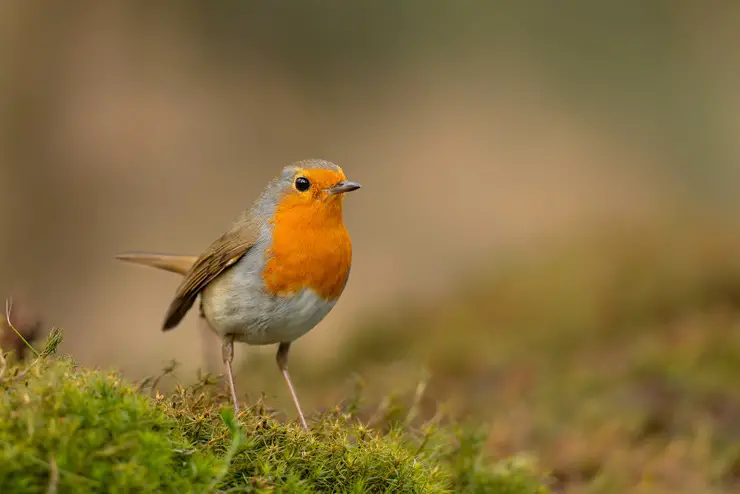
- Scientific name: Erithacus rubecula
- Size: 12.5-14 cm (4.9-5.5 in)
- Weight: 16-22 g (0.56-0.78 oz)
- Wingspan: 20-22 cm (8-8.5 in)
The European robin might be the world’s shortest-living bird! That is, if we consider its average life expectancy – only 1.1 years. These creatures are at a much higher risk of dying in the first year of their lives than other birds, which is why their average lifespan is considered so short.
However, if they survive this first year, European robins can live a pretty long life. One exceptional specimen lived 19 years!
These beautiful birds are found in Eurasia and Northern Africa. Very few populations are migratory, leaving for southern or western Europe for the winter.
Overall, they are considered a sedentary species, residing in moist, spruce-dominated forests.
During the breeding season, they rely on depressions, holes, crevices, sheltered banks, and even objects like flower pots or hats to build their nests in.
The breeding season typically starts in March, although this might differ depending on their geographic location.
2. Dunnock

- Scientific name: Prunella modularis
- Size: 13.5-14 cm (5.3-5.5 in)
- Weight: 16-25 g (0.6-0.9 oz)
- Wingspan: 19-21 cm (7.5-8.3 in)
The average life expectancy of dunnock birds is only two years. However, like all other species, some individuals lived a much longer life, one even reached approximately 11 years old. Nevertheless, this doesn’t deny the fact that these birds are at risk of premature death.
These small passerine birds are found in Eurasia, inhabiting lowland areas featuring woodlands, gardens, and shrubs. They are not migratory.
Females are known to breed with more males at once, making them a unique species. This behavior prompted the male physiology to adapt to sperm competition – another quite rare phenomenon among birds.
The nests are built close to the ground, typically in bushes or conifer trees. They consist of twigs and moss, lined with wool and feathers. The 3-5 laid eggs have a blue color.
3. American Goldfinch
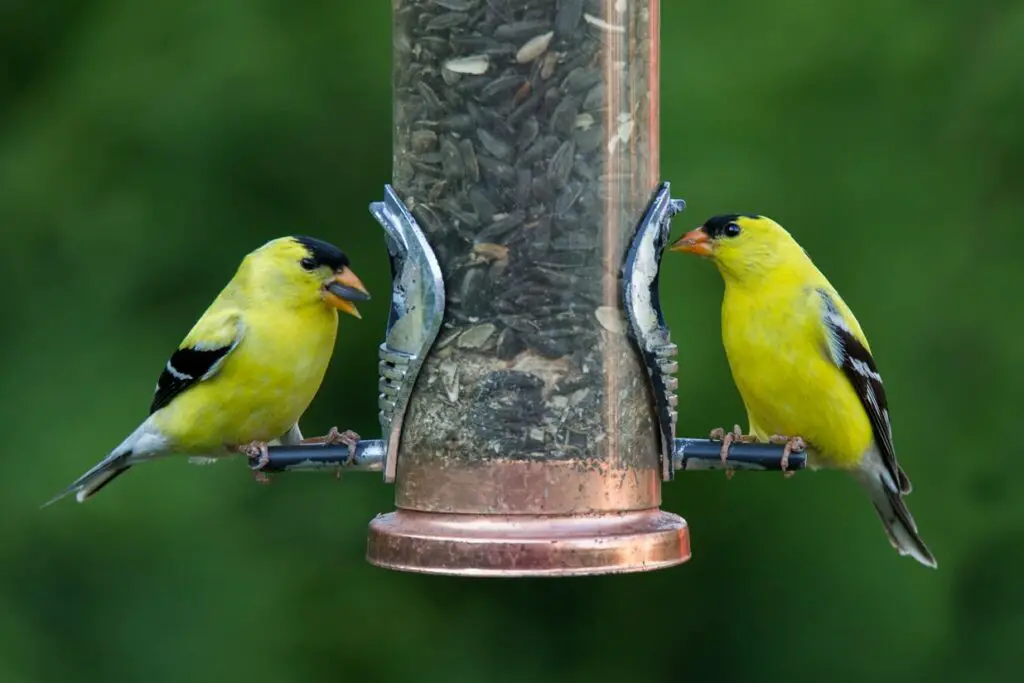
- Scientific name: Spinus tristis
- Size: 11-14 cm (4.3-5.5 in)
- Weight: 11-20 g (0.39-0.71 oz)
- Wingspan: 19-22 cm (7.5-8.7 in)
The average lifespan of the American goldfinch has long been debated. Some argue it’s approximately 2-4 years, others are in favor of 3-6 years.
Either way, these small finches have a much shorter life than other birds. Even their relatives, European goldfinches, are thought to live, on average, eight years.
Despite this, like other species, one exceptional American goldfinch reached an extraordinary age of ten years and five months.
Their short lifespan is partly caused by the numerous predators they face in the wild: snakes, weasels, cats, hawks, blue jays, and many others. Because American goldfinches aren’t territorially aggressive, these predators pose significant threats to both young and adult birds.
American goldfinches are found in North America. They are short-distance migrants that fly south when the weather becomes harsh, and food is scarce.
During the breeding season, female American goldfinches build nests at approximately 10 m (33 ft) above the ground in deciduous shrubs or trees.
4. Common Blackbird
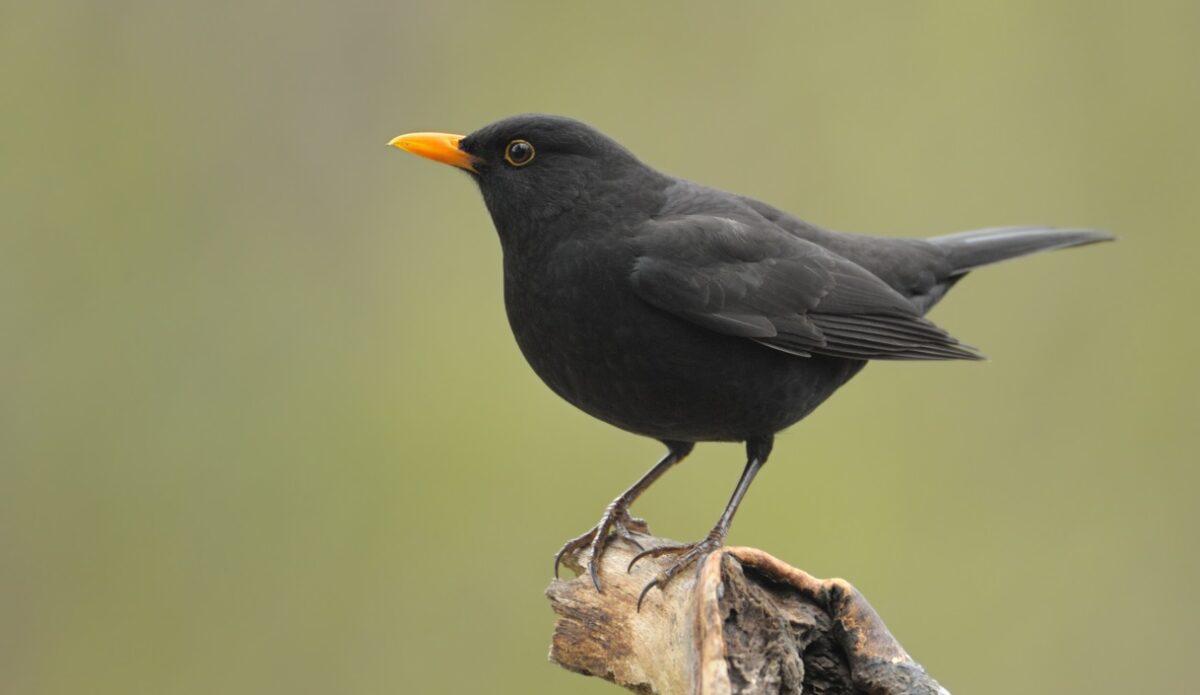
- Scientific name: Turdus merula
- Size: 23.5-29 cm (9.3-11.4 in)
- Weight: 80-125 g (2.8-4.4 oz)
- Wingspan: 34-38 cm (13.4-15 in)
The life expectancy of common blackbirds is 2.4 years. The oldest bird belonging to this species recorded an extraordinary age of 21 years and ten months.
Since these birds are found near human habitation, they’re often preyed upon by domestic cats. In the wild, they fall prey to foxes and several predatory birds. Besides this, their short lifespan is enhanced by the fact that they are hosts of intestinal parasites and ticks.
During the breeding season, common blackbirds are found in the temperate regions of North Africa, South Asia, Eurasia, and the Canary Islands. They are an introduced species in New Zealand and Australia. Some northern populations migrate south, but the species is overall considered sedentary.
Preferred habitats include territories with deciduous trees and dense undergrowth. Common blackbirds are common in gardens, especially during the breeding season, when they build cup-shaped nests in sheds or outbuildings where they find cavities.
Did you know that common blackbirds are among the species that sleep with half of their brains awake?
5. Long-tailed tit
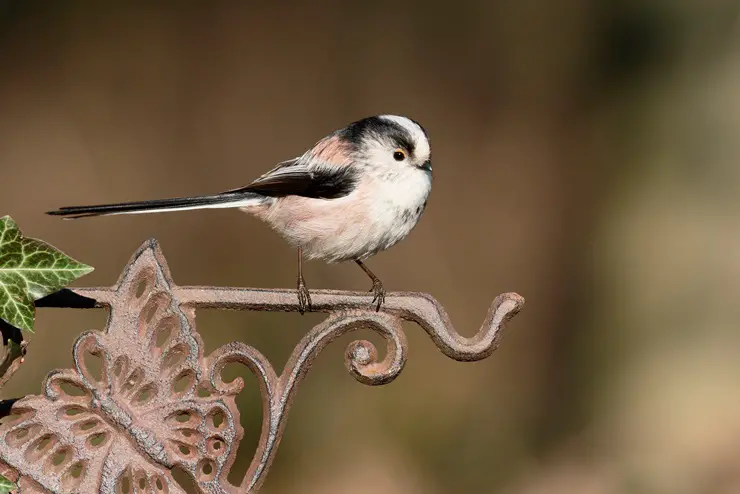
- Scientific name: Aegithalos caudatus
- Size: 13-15 cm (5-6 in)
- Weight: 7-10 g (0.2-0.4 oz)
- Wingspan: 16-19 cm (6.3-7.5 in)
Since it’s such a tiny bird, it’s no surprise the long-tailed tit has a short average lifespan. After all, small birds are at a much higher risk of predation.
These small passerine birds are known to live only up to 2-3 years. The oldest known long-tailed tit reached eight years and 11 months old, which is quite impressive for such a short average life expectancy.
Long-tailed tits are found in the Palearctic, Northern Europe, and in the southern Mediterranean region. They reside in deciduous and mixed woodlands, as well as farmland and riverine woodlands. Occasionally, these tiny creatures are seen in gardens and parks.
During the breeding season, long-tailed tits collect lichen, spider egg cocoons, moss, and feathers to build their nest, which is typically a flexible sac. Here’s a fun fact – long-tailed tits have to collect approximately 6,000 pieces of material to build one nest!
6. European Blue Tit
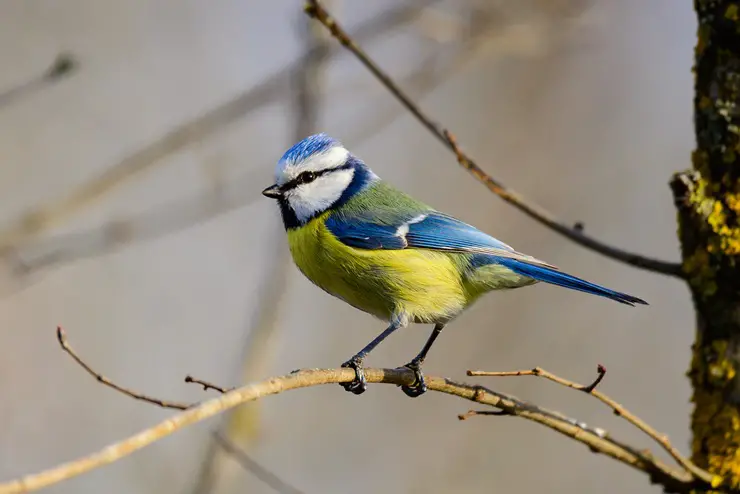
- Scientific name: Cyanistes caeruleus
- Size: 12 cm (4.7 in)
- Weight: 11 g (0.4 oz)
- Wingspan: 18 cm (7.1 in)
Yet another tit species on our list – just as tiny and short-living! The European blue tit is believed to have an average lifespan of three years. This is backed up by an analysis focusing on juvenile and adult survival rates. The oldest living European blue tit reached 11 years and seven months.
Despite their short lifespan, these tiny birds are quite abundant in Europe, where roughly 20-44 million pairs of European blue tits live! Some populations are year-round residents, while others are at least partly migratory.
European blue tits are highly adaptable and can live in various environments. However, if they were to choose, they’d go for parks, gardens, and deciduous woodlands. European blue tits are quite common in towns as well.
During the breeding season, European blue tits build their nests in tree holes. Up to 14 eggs are laid in the same clutch in April or May, which explains why these blue tits are abundant despite their short life expectancy.
7. Great Tit
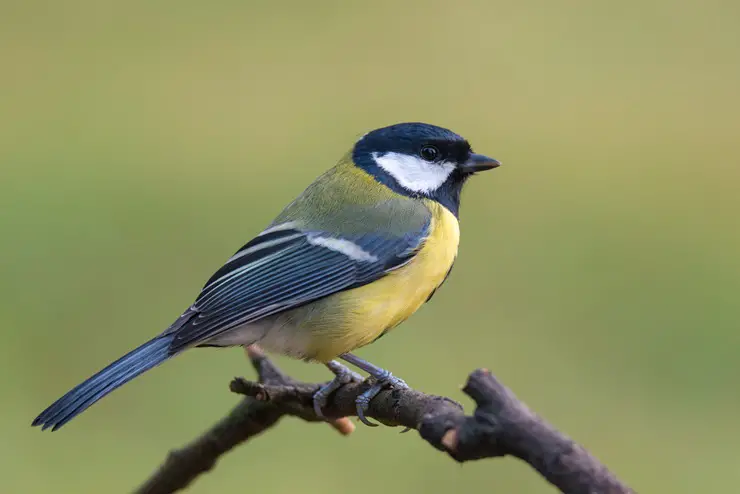
- Scientific name: Parus major
- Size: 12.5-14 cm (4.9-5.5 in)
- Weight: 14-22 g (0.5-0.8 oz)
- Wingspan: 24 cm (9.5 in)
Like the other tits on our list, the great tit has a life expectancy of approximately three years. Despite this, the longest-living great tit on record reached an age of almost 14 years!
Their short lifespan is partly caused by the fact that they have numerous predators, including Eurasian sparrowhawks, gray squirrels, and least weasels.
Great tits are widely distributed across Eurasia and North Africa. It inhabits open deciduous woodland, forest edges, and gardens. They are year-round residents, even in the northern part of their range.
In January, great tits start establishing their territories. They begin defending them in February-March. The beginning of the breeding and nesting season depends on their geographic location, although most populations breed between January and September. The nests are typically built in tree cavities.
8. Song Thrush
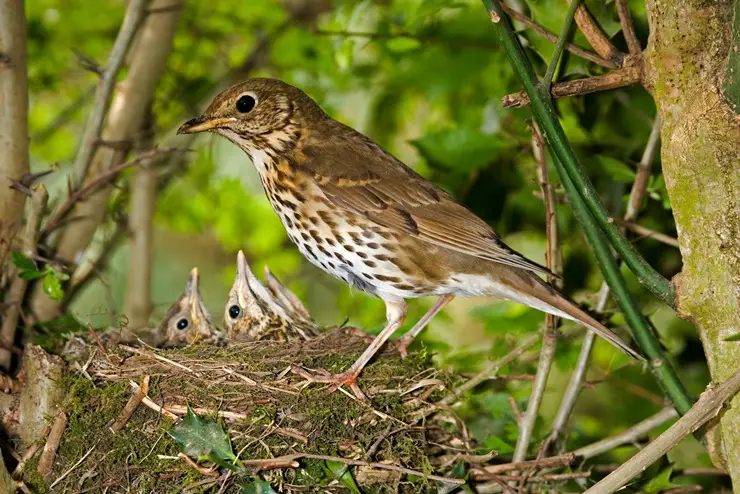
- Scientific name: Turdus philomelos
- Size: 20-23.5 cm (7.9-9.3 in)
- Weight: 50-107 g (1.8-3.8 oz)
- Wingspan: 33-36 cm (13-14 in)
Song thrushes live only up to three years old. Scientists confirmed this upon studying the survival rate of juveniles and adults. The maximum recorded age of a song thrush individual is ten years and eight months.
Cats, sparrowhawks, little owls, magpies, jays, and gray squirrels threaten the eggs, nestlings, and adults. Additionally, song thrushes are prone to being infected by blood parasites, endoparasites, and ticks.
Song thrushes are common in Europe, North Africa, and the Middle East. Some populations are fully migratory, while others are year-round residents. It’s worth mentioning that they are among the few birds in the world that migrate during the night.
These birds may reside in any type of habitat as long as it has trees and bushes. As such, they’re quite common even in urban areas.
During the breeding season, song thrushes built cup-shaped nests. They’re typically built by females and are placed on the ground. The 4-5 laid eggs are blue and have black or purple spots.
9. Common Wood Pigeon
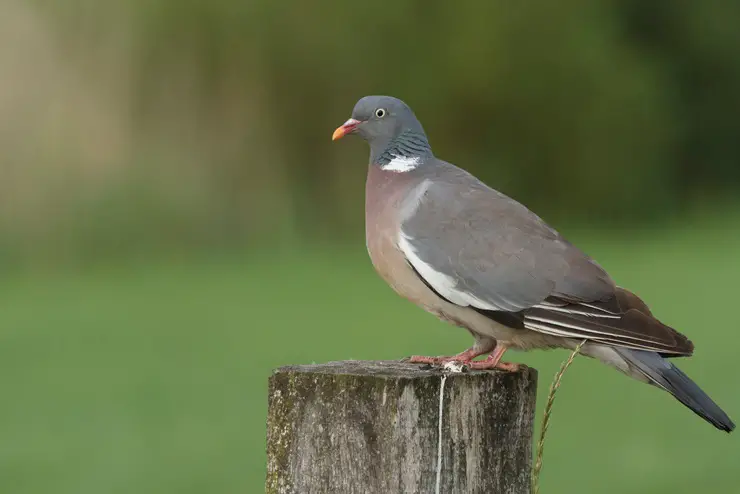
- Scientific name: Columba palumbus
- Size: 38-44.5 cm (15-17.5 in)
- Weight: 300-615 g (10.6-21.7 oz)
- Wingspan: 68-80 cm (27-31 in)
Common wood pigeons have a life expectancy of only three years. Like in the case of other birds, this has been demonstrated by studying juvenile and adult survival rates.
The oldest known common wood pigeon reached an age of 17 years and eight months. It lived on the Orkney Islands.
Common wood pigeons are widely spread across Western Asia and Northern and Eastern Europe. The populations residing in Western Europe are typically year-round residents and are quite abundant in parks and gardens.
During the breeding season, common wood pigeons reside in trees, preferring those located near rivers and roads. Their nests are threatened particularly by crows, which can either kill the baby pigeons or force them to leave the nest earlier than required.
10. Common Chaffinch
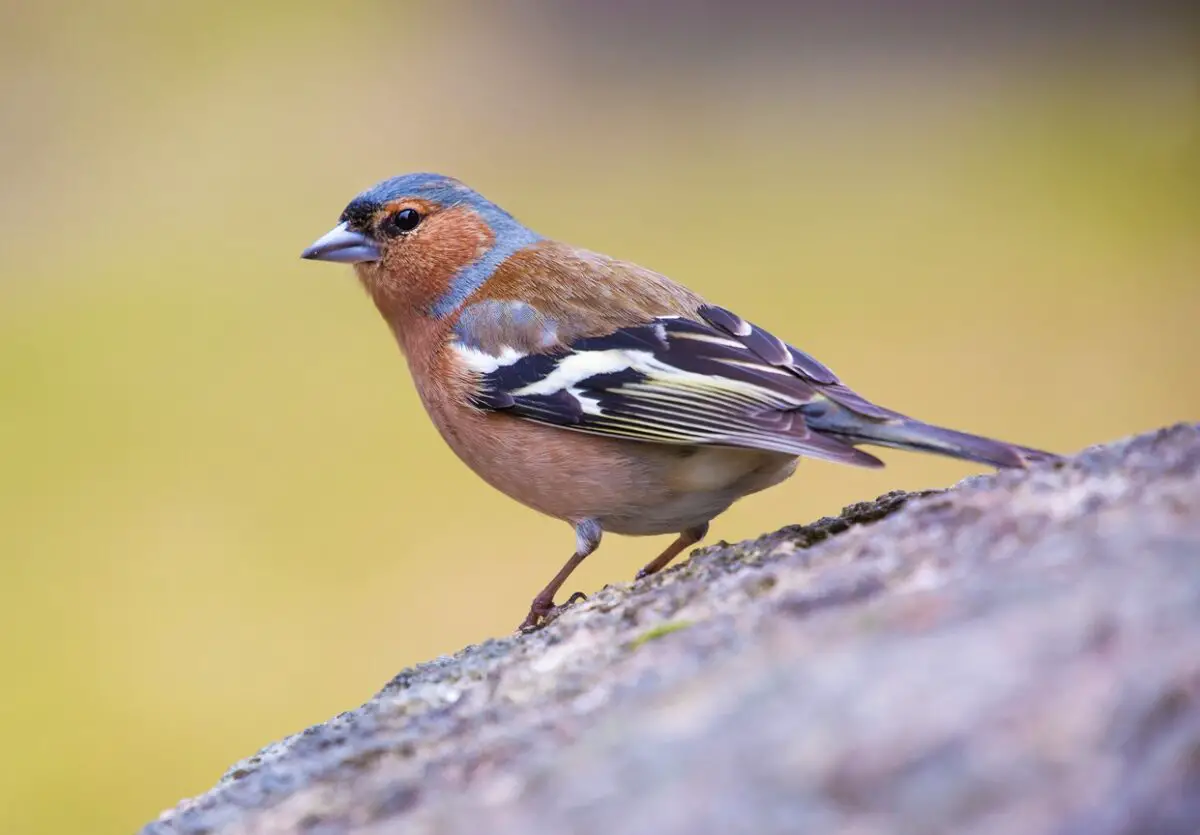
- Scientific name: Fringilla coelebs
- Size: 14.5 cm (5.7 in)
- Weight: 18-29 g (0.63-1.02 oz)
- Wingspan: 24.5-28.5 cm (9.6-11.2 in)
The typical lifespan of common chaffinches is only three years. The oldest known common chaffinch individual recorded a lifespan of 15 years and six months.
One of the reasons for such a short life expectancy is that the eggs and nestlings are highly threatened by crows, eastern gray squirrels, and even domestic cats. Besides this, common chaffinches are known to be infected by the protozoan parasite called Trichomonas gallinae, which can kill them.
These birds are widely distributed in Eurasia, North Africa, and the Middle East. Most European populations are year-round residents. Individuals living in colder regions may migrate to warmer regions.
Common chaffinches are quite widespread in wooded areas during the breeding season. Females build cup-shaped nests. They are placed in trees or bushes, typically a few meters above the ground. One clutch consists of 4-5 eggs which are typically quite different from each other – they can be anything from pale-bluish green to light red.
11. House Sparrow
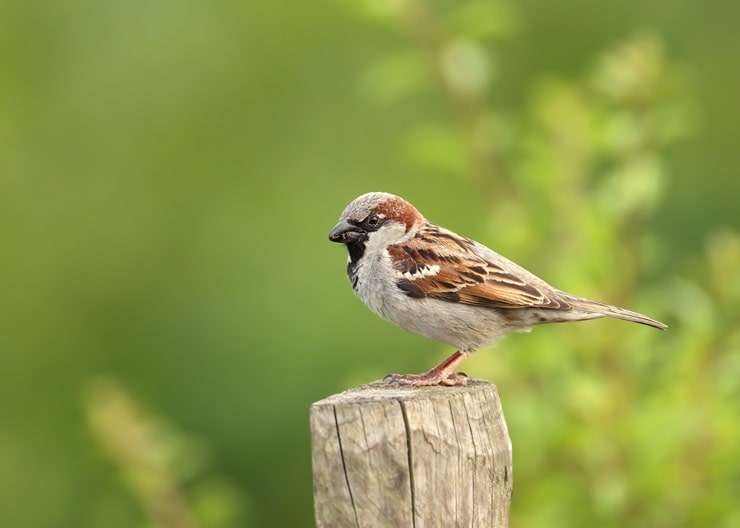
- Scientific name: Passer domesticus
- Size: 14-18 cm (5.5-7.1 in)
- Weight: 14-39.5 g (0.85-1.4 oz)
- Wingspan: 19-25 cm (7.5-9.8 in)
House sparrows have a short lifespan – only about three years. A study shows that only 20-25% of the birds that leave their nests survive their first breeding season.
This is primarily caused by the numerous predators they face, like cats, birds of prey, squirrels, and humans. Other threats to their existence are parasites and diseases, some of the most common being caused by pathogens like Salmonella and Escherichia coli.
Despite the short life expectancy, one captive house sparrow reached an extraordinary age of 23 years!
House sparrows are probably the most abundant species on our list. In fact, it is considered among the world’s most widely distributed wild bird species! Naturally, they aren’t native to all regions.
Most populations are year-round residents. In fact, they do not like to move at all, remaining within the same area for their whole lives. However, some do engage in short-distance migration, and two subspecies are known to be fully migratory.
